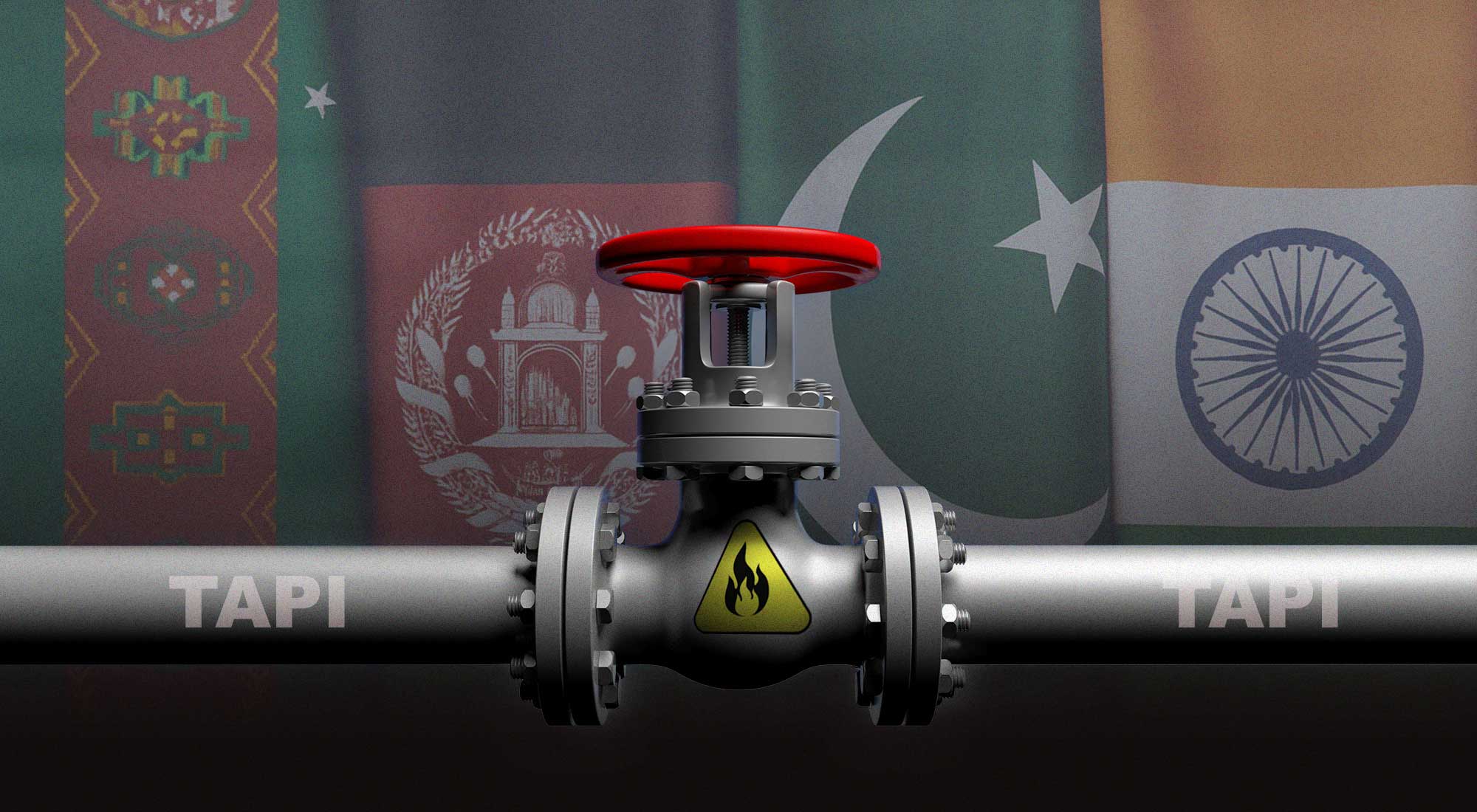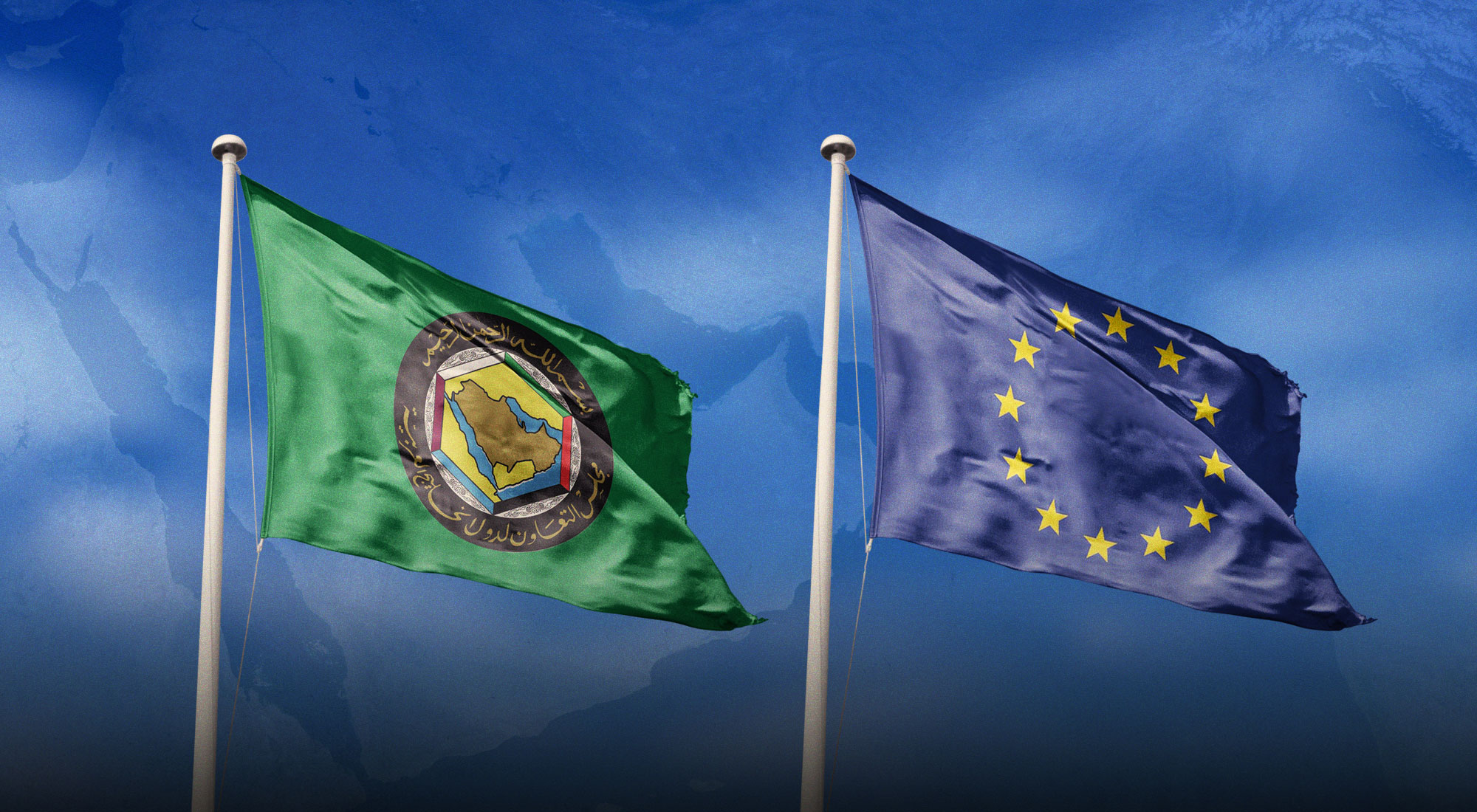After the Taliban seized power in Afghanistan in mid-August 2021, Central Asian presidents sought to reevaluate their political and diplomatic approach toward the new government, assessing how to engage with the re-established Islamic Emirate of Afghanistan. This issue represents a very delicate geopolitical challenge to address, even though the circumstances are completely different compared to 1996-2001. Indeed, at present Central Asian republics have consolidated their state-building process and are now capable of participating as active players in the regional scenario, joining bilateral and multilateral alliances in order to strengthen the regional security architecture.
Central Asian countries have adopted a more conciliatory approach toward the Taliban, mainly aimed at maintaining a state of regional security as well as increasing cooperation focused on the strategic geographic centrality of Afghanistan as a potential trade and energy hub in Central Asia. The concrete steps to relaunch the Turkmenistan-Afghanistan-Pakistan-India (TAPI) natural gas pipeline show the strategic relevance of the improved dialogue and enhanced cooperation between Turkmenistan and the Taliban, also paving the way for the promotion of different connectivity corridors within the Trans-Afghan route as well as trade cooperation aimed at involving all five Central Asian republics.
TAPI gas pipeline: a cornerstone of Turkmen-Taliban cooperation
After nearly 30 years, the TAPI project—a gas pipeline designed to transport natural gas from Turkmenistan to Indian and Pakistan markets via Afghanistan—has been revamped following the inauguration ceremony for the start of works on the Afghan section of this energy route in September 2024.
The Turkmen-Afghan joint commitment to revitalize the TAPI project underlines the Taliban’s solid interest in deepening regional integration and cooperation as well as Ashgabat’s priority to open alternative export routes. The presence of Turkmen leadership—namely the current Turkmen President Serdar Berdymukhamedov and his father Gurbanguly Berdymukhamedov, former president and at present chair of the Turkmen People’s Council—and the Afghan-Taliban Prime Minister at the ceremony confirms the strategic relevance of the TAPI gas corridor, which would allow Turkmenistan to diversify gas export routes, reducing the reliance on Chinese and Russian markets, accounting for more than 90 percent of Turkmen gas exports.[1]
Furthermore, the strategic need to open an alternative export route is emphasized by the ongoing difficulties in developing an east-west energy route—shipping Turkmen gas to the EU through the Southern Gas Corridor—which appears unfeasible due to Russian and Iranian opposition toward any Trans-Caspian underwater energy infrastructure, while the “swap deals” with Iran and Azerbaijan are too limited (nearly 2 billion cubic meters – bcm – of exports both) to boost the westward route of energy exports. In this perspective, international sanctions affecting Iran and Afghanistan could hamper the gathering of necessary investments to develop these energy infrastructures.
Through the TAPI pipeline, Turkmenistan would export 33 bcm of natural gas per year—extracted from the Galkynysh giant field—along a 1,800 km corridor crossing Afghanistan (Herat and Kandahar in the South), then reaching Balochistan province in Pakistan and ending in Punjab, with an expected total cost of $10 billion. However, one of the main issues will still be finding sources of investments to effectively implement the project: indeed, the lack of the Afghanistan government’s international recognition and the unresolved tensions between India and Pakistan prevent international donors and development banks from allocating funds for implementing the remaining segments of the TAPI.
Pakistan and India will each purchase 42 percent of the gas deliveries, while Afghanistan will purchase 16 percent. In addition to 5 bcm of natural gas, Afghanistan could annually earn $500 million-$1 billion in transit fees, creating new jobs and boosting the Taliban’s image as a reliable partner engaged in improving regional interconnectivity.[2]
After this meeting, which underlines the promising dialogue between Turkmenistan and the Taliban following their return to power, some of the constraints that affected the TAPI project, so delaying its realization (economic investments and security concerns), seem apparently solved. Ashgabat will finance the construction of the pipeline’s 150-kilometer segment connecting the border town of Serhetabat in Turkmenistan to Herat, Afghanistan, while the Taliban have already pledged their commitment to provide security by deploying a special military unit (30,000 troops) to protect the infrastructure from potential attacks by the Islamic State Khorasan Province terrorist group.[3]
The realization of the TAPI pipeline would reshape the regional energy scenario, with strategic benefits for all the involved partners, but also attracting the growing attention of other powerful actors. Russia’s growing interest in the TAPI corridor is driven by its need to reshape its energy strategy amid a shifting geopolitical landscape. Moscow views TAPI as a key opportunity to redirect gas exports away from the EU and toward South Asian markets. This is particularly relevant given that Russia has already secured a deal with Uzbekistan and Kazakhstan to reverse the flow of natural gas through the Central Asia–Center (CAC) pipeline—a Soviet-era infrastructure traditionally used to transport gas northward from Turkmenistan. Both countries currently import only small volumes of Russian gas.[4] However, Russia’s potential participation in TAPI does not coincide with Turkmenistan’s energy goals based on diversification and increasing its own gas exports to the international markets.
Taliban relations with Central Asian republics, cooperation in the early stages
TAPI’s future implementation represents the primary outcome of the Turkmen-Taliban cooperation, based on a constructive dialogue and a pragmatic approach: this political orientation is currently backed by all Central Asian political leadership in order to better integrate Afghanistan into the regional cooperation architecture and to prevent destabilizing threats to the regional security.
Following the Taliban’s resurgence, Central Asian countries have had to establish a working relationship with the new government in Afghanistan to preserve regional security and stability, an essential condition for implementing planned trade and energy corridors that pass through Afghan territory. After four years, we can observe that Central Asian republics have adopted a more conciliatory approach with the Taliban, avoiding panic and isolationist tendencies as during the first Taliban regime, promoting instead a political dialogue aimed at the normalization of the bilateral relations with the “old enemies”.[5]
In the first two years after the restoration of the Islamic Emirate of Afghanistan, Central Asian republics adopted different approaches toward the Taliban: among the three Central Asian states that share a border with Afghanistan, only Tajikistan appeared profoundly suspicious and reluctant to consider the Taliban as a reliable political partner, while Uzbekistan and Turkmenistan immediately promoted dialogue with the new government in Kabul in order to preserve regional security. During public remarks on 25 August 2021, Tajik President Rahmon declared that his country will recognize Taliban leadership only if they create an inclusive government including ethnic Tajik and other Afghan minorities, considered a condition to preserve regional security and domestic stability of Central Asian bordering countries.[6] Rahmon’s claim appears motivated considering that ethnic Tajiks comprise about 27 percent of Afghanistan’s population, the second largest ethnic group after Pashtuns, that are 40 percent of Afghans.[7]
Considering its geographic position as a strategic trade hub connecting China and Central Asia with the Middle East and the Indian Ocean, the need to preserve Afghanistan’s stability represents a strategic priority to implement ambitious projects of regional cooperation, so pushing Tashkent and Ashgabat to open dialogue with the Taliban also before 2021. As a matter of fact, Uzbekistan has started talks with the Taliban since 2018, hosting a delegation in Tashkent: double-landlocked Uzbekistan is an active supporter of railway projects crossing Afghanistan, a country that plays a key role as a transit country for trade corridors and as an economic partner within Tashkent’s regional policy. Uzbekistan is Afghanistan’s only neighbor with which it has a railway connection (Termez-Hairaton-Mazar-i-Sharif, built in 2011) and one of the main trade partners and electricity suppliers.
Turkmenistan hosted the Taliban in February 2021 (only six months before Kabul’s takeover) with the intention of securing their firm commitment to provide security for key infrastructural projects such as the TAPI gas pipeline, the Turkmenistan-Afghanistan-Pakistan (TAP) high-voltage power transmission line and the Lapis Lazuli transport corridor, conceived to deliver goods from East to West starting from the Turkmen-Afghan border, crossing Turkmenistan and then the Caspian Sea before reaching the Caucasus and EU markets.[8]
Even if the five Central Asian states avoid officially recognizing the legitimacy of the Taliban government, they have, however, started and deepened diplomatic talks as well as concluded trade, energy and connectivity agreements to involve Afghanistan in the regional cooperation architecture. This prevailing pragmatic approach of Central Asian leaderships toward the Taliban does not include sensitive issues such as civil liberties and women and minorities’ rights, because any action could be perceived as undesirable external interference affecting the positive steps to boost an inclusive diplomatic dialogue. For instance, before 2023, Kazakhstan and Kyrgyzstan remained cautious toward the Taliban, but the purpose of building a constructive dialogue to promote cooperation and preserve security pushed them to adopt a more conciliatory approach. Astana and Bishkek removed the Taliban from the list of banned organizations, while in August 2023, Kazakhstan signed $200 million in commercial deals, mainly to supply Afghanistan with grain and flour, also planning to increase bilateral trade to $3 billion in the coming years.[9]
Also, Tajikistan has started to soften its approach toward the Taliban government of neighboring Afghanistan, increasing electricity exports (after that Kabul fully paid off its remaining energy debts) and discussing cooperation in the security field, due to the shared interest to eradicate the terrorist threat represented by the Islamic State-Khurasan group along the Afghan-Tajik border.[10]
Afghanistan represents a relevant topic in Uzbekistan’s foreign policy undertaken by President Mirziyoyev, which did not change its approach when the Taliban took power. According to Uzbek authorities, relations with Afghanistan should be based not exclusively on the prism of security threats, which has been the predominant approach since 1991, but on reshaping relations in order to promote cross-border trade, humanitarian and cultural cooperation, as well as more active participation in implementing various mutually beneficial regional energy, infrastructure and transport projects.[11]
Tashkent is strongly interested in the creation of the Trans-Afghan railway crossing the country and then reaching Pakistani ports—linking the Termez-Hairaton-Mazar I Sharif railway segment with the Kabul-Peshawar rail line—opening a new trade corridor to the Indian Ocean. In July 2023, Uzbekistan signed a trilateral agreement with Afghanistan and Pakistan for a roadmap to implement the project, with an estimated cost of $6 billion, which should be realized in 2030. This corridor will allow Uzbekistan to diversify its trade routes because about 80 percent of Uzbekistan’s imports and exports pass through Russia, while the Taliban can benefit from transit fees and new transport infrastructures to boost its regional economic integration. In addition to connectivity, these countries also cooperate in the energy sector: following the completion of the Surkhan-Puli-Khumri power transmission line, Uzbekistan would increase electricity supply to Afghanistan by 70 percent.
Uzbek authorities and the Taliban have maintained a regular dialogue. In 2024, Uzbek Prime Minister Abdulla Aripov visited Kabul—the highest-level visit by a foreign official since the Taliban’s return to power more than three years ago. During the visit, the two sides signed investment and trade agreements worth approximately $2.5 billion, covering the energy, agriculture, and manufacturing sectors. In return, a high-ranking Taliban delegation visited Tashkent in February 2025 to discuss expanding trade and transport cooperation.[12] Nevertheless, Uzbekistan’s authorities shall refrain from recognizing the Taliban, a condition linked to the creation of a more inclusive government.[13]
Turkmenistan has also maintained good relations and open dialogue with bordering Afghanistan, mainly based on the political commitment to realize the TAPI pipeline, a cornerstone of the strategy of energy diversification promoted by Ashgabat. This pragmatic approach has solidified Taliban-Turkmen cooperation, resulting in the implementation of several key infrastructure projects. These include the completion of the first phase of the TAP-500 energy system project (Turkmenistan–Afghanistan–Pakistan), which will boost Turkmen electricity supply to Kabul; the inauguration of the Herat Noor-ul-Jihad Substation and the Turkmenistan electricity transmission project; the opening of a 177-meter railway bridge on the Serhetabat–Torghundi line at the Turkmenistan–Afghanistan border; and the launch of construction on the 22-kilometer Torghundi–Sanabar railway—the first segment of the planned Torghundi–Herat railway.[14]
Cooperation in connectivity projects appears promising due to Afghanistan’s geographic position as a potential trade hub in Central Asia, thus attracting Turkmenistan and Kazakhstan’s greater interests to develop an alternative route to the so-called Kabul corridor backed by Uzbekistan. In July 2024, Kazakhstan, Turkmenistan, and Afghanistan discussed the construction of the Torghundi-Herat-Kandahar-Spin Boldak railway from the Turkmen border to the Pakistani ports in the Indian Ocean in order to facilitate trade with South Asia and the Arabian Gulf.[15]
Conclusion
If these cooperation and dialogue efforts appear as a positive and promising evolution for establishing new relations in Central Asia, there are, however, several unresolved problems and hindrances that could negatively affect this trend.
Firstly, in spite of their promises, the Taliban should demonstrate that they are completely able to provide regional security, avoiding that terrorist groups could trigger instability beyond the Afghan border spilling over into neighboring countries, which was one of the key points of the Doha agreement signed between the U.S. and the Taliban in 2020. As a matter of fact, in April and May 2022, the Islamic State Khorasan Province (ISKP) launched rocket attacks from Afghan territory targeting Termez (Uzbekistan) and Panj district (Tajikistan), spreading concerns about the Taliban’s capacity to control the border and undermining the completion of cooperation projects. In spite of a concrete improvement in bilateral relations, Tajikistan continues to perceive as a security threat the presence of the Tehrik-e-Taliban Tajikistan Islamist fighters (the so-called Tajiks Taliban) along the shared border, who are in charge of the security of five districts in Afghanistan’s Badakhshan province.[16]
Destabilizing actions can severely affect the implementation and the regular transit on the energy and transport corridors that should have to cross Afghanistan, such as the Afghan section of the TAPI, power-transmission corridors, railway and roads, which are key segments of the ongoing regional connectivity architecture, namely the different Trans-Afghan corridors. In this perspective, the Taliban’s purported commitment to deploy security forces to protect infrastructures could be questioned considering the concrete capacity to finance and manage this kind of patrolling military operation.
Furthermore, the lack of international recognition of the Islamic Emirate of Afghanistan and Western sanctions on the Taliban government could hinder the possibility of benefiting from financial assistance, investments and loans—granted from institutions such as the Asian Development Bank, World Bank or Western states—to carry out extremely costly projects such as the TAPI gas pipeline.
Moreover, the tense relations between India and Pakistan could delay the development of these corridors, also considering their competition to promote different routes and mainly ports: India supports the Iranian port of Chabahar as the gateway of a north-south corridor of connectivity crossing Central Asia and Afghanistan, while Pakistan privileges its own ports such as Gwadar, the strategic hub of the China-Pakistan Economic Corridor, a BRI-flagship project.
Lastly, the Taliban’s project to build the Qosh Tepa Canal without consultations with the downstream countries could fuel new tensions in Central Asia, diverting water from the Amu Darya River, which is also needed by Uzbek and Turkmen farmers for agriculture and to cultivate cotton, the “white gold”. The realization of this project is spreading concerns in Turkmenistan and Uzbekistan, which have been the main promoter of a constructive dialogue with the Taliban. At the same time, the Qosh Tepa Canal could be a testing ground for the future relations between the Taliban and Central Asian states, which could pave the way for a discussion on the possibility of including Afghanistan within a regional water-sharing agreement in order to manage water distribution and downgrade potential conflicts and instability.
This regional architecture of connectivity, within which Afghanistan represents the strategic linchpin, is also an attractive option for China, which could expand BRI corridors southward, opening alternative trade routes to the traditional east-west direction, achieving another successful step in its strategy of diversification to reach the European and international markets.
References
[1] “Statistical Review of World Energy 2024,” Energy Institute, p. 45, https://www.energyinst.org/statistical-review.
[2] Farangis Najibullah and Khursand Khurramov, “Central Asia’s High-Stakes Gamble With The Taliban,” RFERL, September 22, 2024, https://www.rferl.org/a/afghanistan-taliban-kazakhstan-kyrgyzstan-uzbekistan-tajikistan-turkmenistan/33126717.html.
[3] “TAPI pipeline prospects finally get a shot in the arm,” Pakistan Today, January 18, 2022, https://www.pakistantoday.com.pk/2022/01/18/tapi-pipeline-prospects-finally-get-a-shot-in-the-arm/.
[4] Syed Fazl-e-Haider, “Turkmenistan Resumes Work on TAPI Pipeline Despite Geopolitical Hurdles,” Eurasia Daily Monitor, September 19, 2024, https://jamestown.org/program/turkmenistan-resumes-work-on-tapi-pipeline-despite-geopolitical-hurdles/.
[5] S. Frederick Starr and Svante E. Cornell, “Stepping Up to the “Agency Challenge”: Central Asian Diplomacy in a Time of Troubles,” Silk Road Paper, Central Asia-Caucasus Institute & Silk Road Studies Program, July 2023, pp. 29-30, https://www.silkroadstudies.org/resources/230726Agency-Final.pdf.
[6] President of the Republic of Tajikistan, “Meeting with the Minister of Foreign Affairs of the Islamic Republic of Pakistan Makhdum Shah Mahmood Qureshi,” August 25, 2021, http://president.tj/node/26366.
[7] Minority Rights, “Afghanistan,” https://minorityrights.org/country/afghanistan/.
[8] Fabio Indeo, “A complex Turkmen-Taliban meeting,” NATO Defense College Foundation, February 2021, https://www.natofoundation.org/central-asia/a-complex-turkmen-taliban-meeting/.
[9] Almaz Kumenov, “Kazakhstan signs $200 million in contracts with Afghanistan,” Eurasianet, August 5, 2023, https://eurasianet.org/kazakhstan-signs-200-million-in-contracts-with-afghanistan.
[10] Farangis Najibullah and Khursand Khurramov, “Central Asia’s High-Stakes Gamble With The Taliban.”
[11] Akram Umarov, “The “Afghan Factor” in Uzbekistan’s Foreign Policy: Evolution and the Contermporary Situation,” Asian Affairs 52, no. 3 (2021): p. 9, https://doi.org/10.1080/03068374.2021.1957321.; Richard Weitz, “Uzbekistan’s New Foreign Policy,” Central Asia-Caucasus Institute and Silk Road Studies Program, Washington DC; Stockholm, pp. 18-19., 2018, https://www.silkroadstudies.org/resources/pdf/SilkRoadPapers/1801Weitz.pdf.
[12] Aigerim Turgunbaeva and Fayazuddin Ghiasi, “The Taliban’s Diplomatic and Economic Expansion in Central Asia,” Central Asia and Caucasus Analyst, March 11, 2025, https://www.cacianalyst.org/publications/analytical-articles/item/13850-the-new-russia-iran-treaty-implications-for-the-south-caucasus-region.html.
[13] Jennifer B. Murtazashvili and Temur Umarov, “Nobody’s Backyard: A Confident Central Asia,” Carnegie Endowment for International Peace, September 5, 2024, https://carnegieendowment.org/research/2024/09/nobodys-backyard-a-confident-central-asia?lang=en.
[14] Vali Kaleji, “The First Phase of the TAPI Gas Pipeline: From Serhetabat, Turkmenistan to Herat, Afghanistan,” Central Asia and Caucasus Analyst, January 2, 2025, https://www.cacianalyst.org/publications/analytical-articles/item/13836-the-first-phase-of-the-tapi-gas-pipeline-from-serhetabat-turkmenistan-to-herat-afghanistan.html.
[15] “Kazakhstan, Turkmenistan and Afghanistan Plan New Railway Line,” The Times of Central Asia, July 22, 2024, https://timesca.com/kazakhstan-turkmenistan-and-afghanistan-plan-new-railway-line/.
[16] Lucas Webber, “ISKP Expands its Focus Toward Central Asia,” Terrorism Monitor 21, no. 8, April 14, 2023, https://jamestown.org/program/iskp-expands-its-focus-toward-central-asia/.








